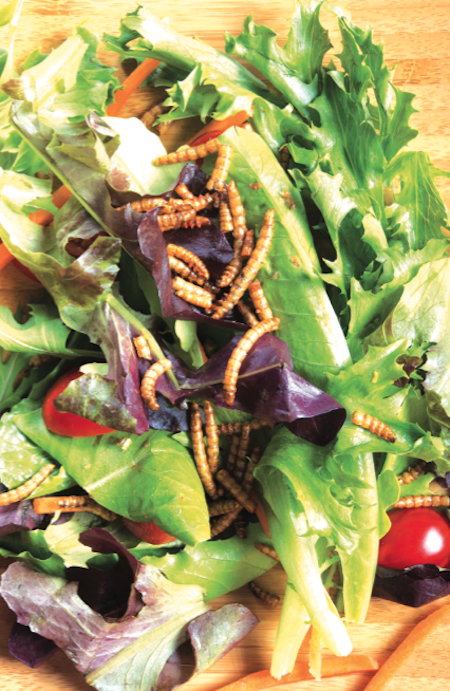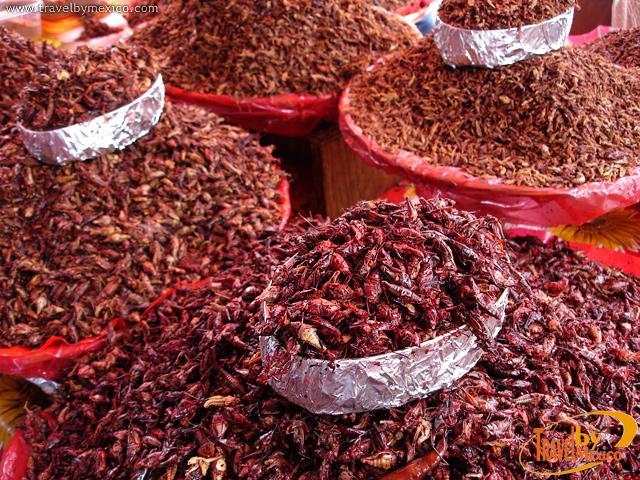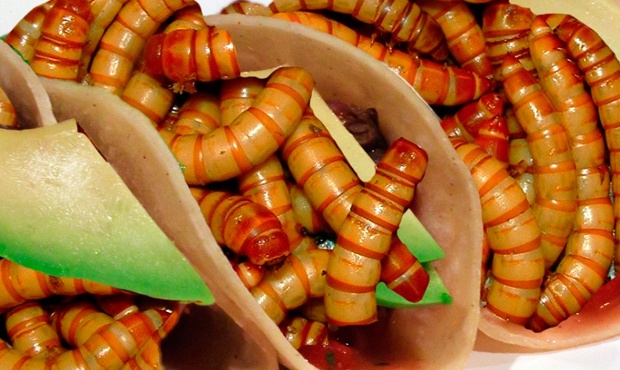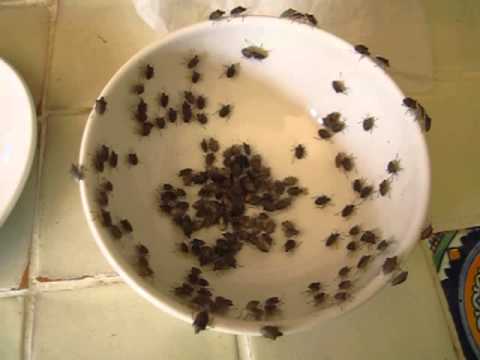More than 1,900 species of Insects are Edible
It’s a bug’s world, and we’re just living in — and now eating — it.
Credit (or blame) environmentalists. Or the push for healthier diets. Or the Internet. Regardless, cooking with insects — especially crickets, mealworms and wax worms — is trendy, spawning hundreds of Pinterest boards, cookbooks and the term “entopreneurs” (as in entomology), people profiting from this six-legged fad. The business-trend magazine Fast Company recently reported that the niche industry is worth $20 million and growing.
So if we can’t beat them, can we eat them?
“At any angle you look at it, insects have the advantage,” said Daniella Martin, creator of Girl Meets Bug, a blog dedicated to encouraging the public to eat insects. “They’re ecologically sustainable, use less resources and are a high-protein option.”
“It’s also cleaner than livestock.”
Scientists have discovered that more than 1,900 species of insects are edible. Most people might gag at the thought, but in Asia, Africa and Latin America, insects are treats and can even be more expensive than meat, according to “The Insect Cookbook.” The 2012 book, written by entomologists and a chef, argues the benefits of eating insects for health — they are a good source of protein, amino acids and minerals, they say — and for the environment.
Their recipes include silkworm cookies, caterpillar stew, insect burgers and even “Hakuna Matata,” which consists of rice, veggies and a wide variety of insects.
On her blog, Martin features cooking videos as well as insect recipes. The best — and tastiest — way to cook with bugs, she says, is to saute them like shrimp or roast them in the oven with a little olive oil and salt. For newbies, she recommends toasting wax worms in the oven to enhance their peanut flavor and eating them as a snack.
Bee larvae, she said, when sauteed in butter, taste like “mushroomy bacon.” When mealworms are sauteed, roasted or boiled, they taste like nutty shrimp with juicy bodies. Grasshoppers, commonly eaten in Mexico, are roasted with chili and lime. Seventeen-year cicadas, when cooked, are supposedly tender and delicious.
For those who want to start simpler, Martin, who is also the author of “Edible: An Adventure Into the World of Eating Insects and the Last Great Hope to Save the Planet,” recommends buying products that subtly incorporate edible insects, such as cricket flour or cricket tortilla chips. The industry, she said, has grown to offer a diverse range of possibilities.
Crickets are among the most popular edible insects. Bitty Foods sells Chocolate Cardamom Cookies with cricket flour, Next Millennium Farms ships several pounds of dried crickets, and Exo offers four kinds of cricket protein bars.
“There are now a ton of products that won’t gross you out,” Martin said. “I promise.”
And bugs have a noble purpose. The U.N. Food and Agriculture Organization reported in 2013 that edible insects could help fight world hunger because of their high nutritional value and low environmental impact.
“The case needs to be made to consumers that eating insects is not only good for their health, it is good for the planet,” according to the report.
Two billion people around the world regularly eat insects, but that doesn’t mean many people in the United States will, said John Ruberson, the head of the entomology department at Kansas State University.
“People go out of their way to eat shrimp, but those are really like the cockroaches of the ocean,” Ruberson said. “It seems we still have this aversion to eating insects.”
On the other hand, no scientific data back up the idea that insects have more protein than, say, beef, said Lee Likins, a research instructor at the University of Missouri-Kansas City who studies entomology. Although he supports the eating of insects, because it’s a way to diversify one’s diet, he is doubtful that the mass production of edible insects would help reduce the Earth’s carbon footprint.
Likins said he sees the recent popularity of edible insects as just a passing trend. He cited a recent essay from a University of London professor that argued the only way people will eat insects is if they seem appealing.
“If people want this to succeed, making it a fad and making it fun is going to be the best way to change the cultural aspect,” Likins said.
Grasshopper kebabs, anyone?
BY MEREDITH NEWMAN
The Kansas City




